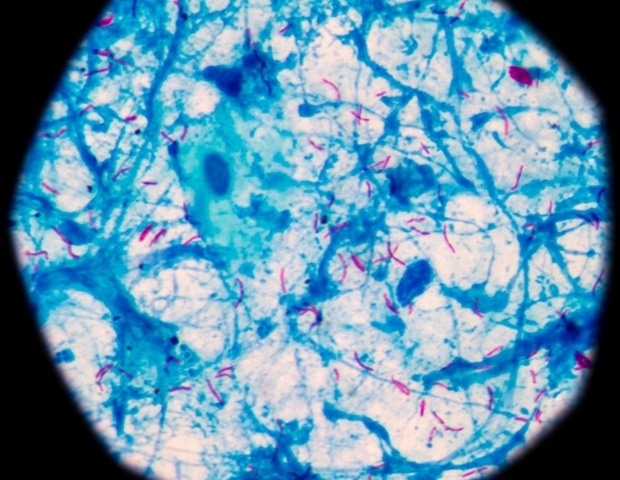While ginger is an economically significant crop, its production is severely affected by fungal pathogens, especially Pythium aphanidermatum, which causes yield losses and decline in crop quality. Researchers at Mohanlal Sukhadia University…
Blog
-

From Ballon d’Or to broken: What next for Rodri? Man City’s injury-plagued midfielder facing fight to resurrect his career
Manchester City’s Champions League visit to Villarreal should have been a triumphant homecoming for Rodri, a return to the club that made him. But the midfielder will get no warm welcome back from his former fans at the Estadio de la Ceramica on…
Continue Reading
-

‘It’s like they’ve erupted out of someone’s subconscious’: how horror came to possess modern cinemas | Film
The biggest jump-scare the film industry has had in 2025? The return of horror as a main player at the UK box office. As a genre, it has impressively outperformed previous years (a 22% year-on-year increase for the UK and Irish box office:…
Continue Reading
-

The Athlete365 x Powerade Mind Zone returns for Milano Cortina 2026
Following its launch at Paris 2024, the space quickly became one of the most popular areas in the Olympic Village. Approximately 2,300 athletes from 148 countries took part in virtual reality mindfulness sessions, while thousands more joined art…
Continue Reading
-

Tramadol And Antidepressants Raise Seizure Risk – European Medical Journal Tramadol And Antidepressants Raise Seizure Risk
TRAMADOL with CYP2D6-inhibiting antidepressants was associated with higher seizure rates in nursing home residents in Medicare. The association came from a population-based cohort using a complete Medicare nursing home sample from 2010 to…
Continue Reading
-

Mysterious JWST Object Might Be The First Galaxy In The Universe
A recent detection from JWST is being widely discussed. The discoverers suggest that it might be an incredible record-breaker: it could be the oldest galaxy we have ever seen. This is yet to be confirmed, and other hypotheses are also very…
Continue Reading
-

Why it’s important to advance coherence in the EU’s circular economy policy mix – CEPS
Achieving a coherent policy mix – meaning a set of different policies that are synergetic and don’t conflict with each other while pursuing a specific goal – has long been an objective in EU policymaking.
As early as 2001, the EU Strategy for Sustainable Development argued for improved policy coherence and reduced policy spillovers to achieve ‘economically, socially and ecologically sustainable development’.
In the 2019-24 political cycle, the European Commission’s Circular Economy Action Plan emphasised that a coherent mix of policies across all stages of a product’s lifecycle can help scale up green business models and sustainable resource consumption. Similarly, the Green Deal Industrial Plan identified a coherent policy environment as a key pillar in its strategy for rolling out green technologies.
Policy coherence is gaining more prominence as the Commission advances its Omnibus work to simplify the regulatory framework and reduce administrative burdens for EU businesses. In theory, a well-aligned policy mix with minimal conflicts can help ease these burdens and support the EU’s sustainability and competitiveness goals.
But where do things stand today? In short, there’s been some positive developments, but more can (and should) be done – and next year’s expected Circular Economy Act would be a good starting point.
Coherence in the present policy mix – it’s a mixed picture
While coherence with existing EU and international policies is one of the criteria in impact assessments, in line with the Commission’s better regulation guidelines, there are very few empirical assessments of the level of coherence in the overall policy mix – and none specifically for the circular economy.
A new paper (full disclaimer, co-written by this author with Valeria Zambianchi) seeks to address this gap by focusing on the EU’s circular economy policy mix as it was shaped during the 2019-24 political cycle. The analysis focuses on four sectors – electronics and ICT, batteries, automotive and critical raw materials – and drew on the experiences of business actors working within these sectors.
The assessment paints a mixed picture. On average, the policies in the mix have a medium-to-high degree of coherence with each other. Importantly, at the strategic level, the European Green Deal stood out as the most coherent policy. Put simply, its long-term framework and strategic direction were seen by businesses as largely in line with the other individual policies in the mix, suggesting a strong and consistent signal to EU businesses.
However, issues start to emerge one level down. Two follow-up strategies – the Chemicals Strategy for Sustainability and the EU Industrial Strategy – ranked the lowest in terms of experienced policy coherence. Moreover, four major strategies, namely the Circular Economy Action Plan, the EU Industrial Strategy, the Chemicals Strategy for Sustainability and the Green Deal Industrial Plan, all show medium-to-low levels of policy coherence with each other, which suggests their goals are not well-aligned.
Issues of incoherence become more apparent when looking into how different directives and regulations in the mix interact with each other. Chemicals policies, namely the Reach Regulation and the RoHS Directive, show low-to-medium levels of coherence with several other policies, including the recently adopted Batteries Regulation, Right to Repair Directive and Ecodesign for Sustainable Products Regulation. What these tensions highlight is that the longstanding disconnect between circularity and chemicals policies persists, despite recent legislative developments.
Even more eye-opening is the low-to-medium coherence between the EU Taxonomy Regulation and most of the other assessed policies in the mix, including the Critical Raw Materials Act, the EU Industrial Strategy and the Green Deal Industrial Plan. Introduced in 2020 to provide a transparent framework for defining sustainable investments, the Taxonomy Regulation has caused businesses to doubt about whether the criteria and selection of sectors are consistent with the priorities of the other policies in the mix.
The Waste Shipment Regulation is another example of a policy demonstrating low-to-medium coherence, reflecting its limited alignment with various other policies. Businesses highlighted the persistent mismatch between waste transport rules and circularity objectives. They pointed to the lack of synergies between the Regulation and the EU’s industrial policy goals, particularly those that aim to boost the use of secondary raw materials stemming from the Critical Raw Materials Act.
Finally, another notable finding is that many businesses perceive limited synergies between the circular economy’s objectives and those of the trade and climate policy domains.
Taking steps towards a more coherent policy mix
Amid ongoing discussions over the need to reduce the burden on businesses, the above findings highlight areas where sectoral and horizontal policies within the expanded circular economy policy mix have intersected and resulted in incoherence. Going forward, efforts to improve coherence should begin with the Circular Economy Act proposal – expected sometime in 2026 – that will aim to develop an EU single market for circular products and services.
The Act’s upcoming impact assessment is a good opportunity to include an explicit analysis of how synergies between the various policies can be improved and conflicts avoided. This can then provide the groundwork for concrete actions to strengthen the single market for circular products and services, which would be supported by a thorough trade-off analysis.
One such action could be in the domain of public procurement criteria for circular goods and services. These would need to balance climate and circularity objectives and thoroughly consider impacts across the different lifecycle stages of products.
A comprehensive fitness check, like the one conducted in 2014 for the waste acquis, could also be conducted to reflect policy developments over the past decade. On top of this, an oversight cross-DG team within the Commission could be tasked with screening different legislation and promoting compatibility between different policies.
Given that policy goals increasingly integrate objectives from industrial policy, competitiveness, the circular economy, and climate policy, it will also be important to send consistent signals to EU businesses. To do this, future strategies in these domains should be accompanied by a dedicated roadmap outlining how different actions impact cross-cutting areas, as well as a dedicated monitoring framework to easily track progress.
This Expert Commentary is based on the journal article ‘Unpacking policy coherence: a network analysis of the EU policy mix for the circular economy’
Continue Reading
-

US funding cuts threaten decades of progress in pediatric tuberculosis
A new study projects that US funding cuts to global health aid will have a catastrophic effect on pediatric TB, with children in Sub-Saharan Africa and Southeast Asia likely to experience a significant spike in preventable cases and…
Continue Reading
-

ESA-supported test leads to better in-flight connectivity
Applications21/10/2025
6 views
0 likesBetter in-flight streaming and video-calling might just become more accessible thanks to a project supported by the European Space Agency (ESA). Building upon the success of an experiment for a new type of antenna terminal together with ESA, Viasat – a global leader in satellite communications – now plans to commercialise its new in-flight connectivity solution called Viasat Amara.
Viasat Amara has a dual-beam phased array antenna that provides both better access to video calling (a latency-sensitive use), as well as video streaming such as watching a football match (a bandwidth-sensitive use). This is possible because the antenna can connect to satellites both in low Earth orbit and in geostationary orbit, depending on what is needed. Links using satellites in low Earth orbit have lower latency with minimal communication delays, whereas those with satellites in geostationary orbit have a high bandwidth and so can transmit much more data.
Testing the antenna
Antenna terminal used on a demonstration flight for Viasat, designed and tested within an ESA partnership
The antenna terminal was developed, designed and tested within an ESA partnership, under ESA’s programme of Advanced Research in Telecommunications Systems (ARTES). The experiment, conducted in 2021, consisted of a demonstration flight from Rotterdam in the Netherlands to Payerne in Switzerland. The antenna provided a reliable satellite connection en route, enabling passengers to stream content on Youtube and Netflix, and video call with colleagues on the ground.
The antenna’s design
Visualisation of the arrays of Viasat’s in-flight connectivity antenna
The antenna uses an innovative design known as an electronically steered phased array. Rather than relying on a single large antenna that physically moves to track satellites, it uses many small components. These individual elements coordinate the timing of their signals to have a unified connection, similar to how a stadium wave forms as each person stands up consequently. This mirrors movement and provides not only a faster way to connect, but also the possibility of connecting to two satellites simultaneously.
Viasat’s in-flight solution’s commercial service is expected to begin in 2028. Thanks to its modular technology, the product can be easily incorporated into existing antennas, making it cheaper and easier to incorporate in passenger airlines.
“Phased array antennas are an evolutionary and much needed step towards more energy and space efficient in-flight connectivity solutions, and we are proud to have contributed to Project Aidan – a key milestone that led Viasat to developing Amara. We’re looking forward to next opportunities for cooperation with Viasat, and many other industry partners – for the benefit of all ESA Member States,” said Massimiliano Simeoni, Aidan’s Project Implementation Manager at ESA Connectivity and Secure Communications.
“The Viasat Aera terminal is a key part of Viasat Amara, our next generation in-flight connectivity solution going far beyond fast and free high-speed Wi-Fi,” said Viasat on its Viasat Amara announcement. “Our pioneering mission remains to help our airline customers maximize connectivity’s enormous potential for brand, loyalty, and growth. It’s been great to work with ESA as one of our key partners to help bring it to fruition.”
This antenna development marks the beginning of exciting opportunities for the future of onboard connectivity.
Continue Reading

